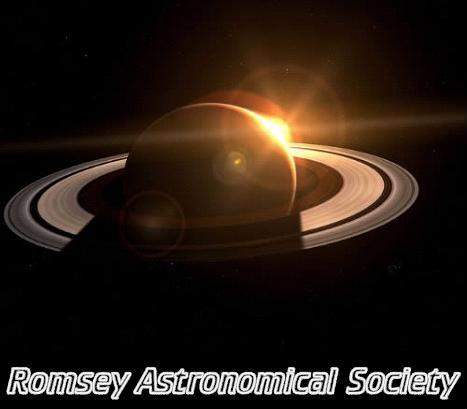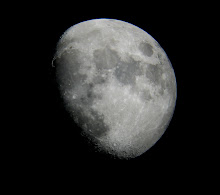Astronomers say they are now confident that a planet orbiting a star some 500 light-years away is rocky.
Detailed observations show the world, dubbed Corot-7b, to have a mass just five times that of the Earth. Combined with the object's known radius, the measurement means the far-off world should be solid in nature. Most of planets identified outside our Solar System are so big they are almost certainly gas giants like our Jupiter and Saturn.
But it is unlikely that life could survive on the surface of Corot-7b because the temperatures would be blistering.
The planet is only 2.5 million km away from its host star, or 23 times closer than Mercury is to the Sun. The discovery of Corot-7b was announced in February. It was detected using the French-led Corot spacecraft. The satellite is equipped with a sensitive telescope and camera-system which hopes to catch a planet as it crosses the face of a distant "sun", dimming its light ever so slightly.
This transit method, as it is known, established that the planet has a radius that is about 80% greater than the Earth's. The Corot approach, though, cannot, establish the mass of the planet; and without the mass, the density (and an assessment of its rockiness) cannot be firmly established.
To fix this number, scientists went to the High Accuracy Radial velocity Planet Searcher (Harps) spectrograph attached to the European Southern Observatory's 3.6m telescope at La Silla in Chile. It investigates planets in a different way, recording the "wobble" a massive object will induce in its parent star as it orbits about it.
The observations with Harps infer that Corot-7b has a mass of about five Earth masses, making the exoplanet's density very similar to the Earth's. This is compelling evidence that it is a solid, rocky world.
"This is science at its thrilling and amazing best," said Didier Queloz, leader of the team that made the Harps observations. "We did everything we could to learn what the object discovered by the Corot satellite looks like and we found a unique system."
Wednesday, 16 September 2009
Thursday, 10 September 2009
Extraordinary Hubble
The following article has been taken from www.bbc.co.uk and was written by Jonathon Amos
Extraordinary Hubble. Some say it is the greatest scientific instrument since the telescope Galileo himself used to study the sky 400 years ago.
Certainly, it is hard to think of another machine that has changed so completely the way our species views its place in the cosmos.
The Pillars of Creation, the Eskimo and Cat's-Eye Nebulas, the Tadpole and Sombrero Galaxies - we all know the pictures even if we're not quite sure precisely what it is we're looking at.
The images fill books, adorn posters, and feature in TV docs and movies - they really are "iconic".

Above: Butterfly Nebula

Above: Carina Nebula
And so here we are again. Hubble 6.0. A repaired, refurbished, revitalised telescope ready to reveal yet more wonders. Nasa's PR machine has been in overdrive to find the pictures that best illustrate the observatory's new capabilities following its fifth and final servicing mission in May. A TV producer came to see me before the announcement to say they were worried that Wednesday's new batch might not be as exciting as past releases. "Don't be," I said. "They'll be spectacular; they always are." And I haven't been disappointed. The picture of the ButterflyNebula, showing the end stages of a star, I predict will become the wallpaper on umpteen computers in the next few days.
For sure, we've been given the "money shots" - the ones that tell US and European taxpayers that their orbiting investment continues to be well spent (remember that Hubble is 15% a European Space Agency mission). But it is some very fuzzy - and on the face of it, pretty dull - pictures that I'm anxiously waiting to see. These will also come via Hubble's new Wide Field Camera 3.

Above: Hubbles view of Jupiter
It has the power to look deeper into the Universe than ever before, to peer at events so far back in time and so faint that their light will be arriving at the telescope's detectors just a few photons at a time. Even before the latest servicing mission, Hubble could spy events occurring a mere 700 million years after the Big Bang, when the Universe would have been just 5% of its present age. "New Hubble" should be able to stretch that vision still further, taking us into an epoch when we think the very first stars and galaxies came into being.
Theory would suggest that the first stars were monsters - more than a hundred times the mass of our little Sun. They would have burned brilliant but brief lives, blowing themselves apart to seed the cosmos with the very first heavy elements. Iron, magnesium, calcium, carbon - the stuff from which we're all made. Who knows? Some of that material could be in our bodies right now.
Can New Hubble see this early action? I hope so.
Astronomy's great "discovery machine" is back in action.

Above: NGC5866

Above: Orion Nebula

Above: NGC6217
Extraordinary Hubble. Some say it is the greatest scientific instrument since the telescope Galileo himself used to study the sky 400 years ago.
Certainly, it is hard to think of another machine that has changed so completely the way our species views its place in the cosmos.
The Pillars of Creation, the Eskimo and Cat's-Eye Nebulas, the Tadpole and Sombrero Galaxies - we all know the pictures even if we're not quite sure precisely what it is we're looking at.
The images fill books, adorn posters, and feature in TV docs and movies - they really are "iconic".

Above: Butterfly Nebula

Above: Carina Nebula
And so here we are again. Hubble 6.0. A repaired, refurbished, revitalised telescope ready to reveal yet more wonders. Nasa's PR machine has been in overdrive to find the pictures that best illustrate the observatory's new capabilities following its fifth and final servicing mission in May. A TV producer came to see me before the announcement to say they were worried that Wednesday's new batch might not be as exciting as past releases. "Don't be," I said. "They'll be spectacular; they always are." And I haven't been disappointed. The picture of the ButterflyNebula, showing the end stages of a star, I predict will become the wallpaper on umpteen computers in the next few days.
For sure, we've been given the "money shots" - the ones that tell US and European taxpayers that their orbiting investment continues to be well spent (remember that Hubble is 15% a European Space Agency mission). But it is some very fuzzy - and on the face of it, pretty dull - pictures that I'm anxiously waiting to see. These will also come via Hubble's new Wide Field Camera 3.

Above: Hubbles view of Jupiter
It has the power to look deeper into the Universe than ever before, to peer at events so far back in time and so faint that their light will be arriving at the telescope's detectors just a few photons at a time. Even before the latest servicing mission, Hubble could spy events occurring a mere 700 million years after the Big Bang, when the Universe would have been just 5% of its present age. "New Hubble" should be able to stretch that vision still further, taking us into an epoch when we think the very first stars and galaxies came into being.
Theory would suggest that the first stars were monsters - more than a hundred times the mass of our little Sun. They would have burned brilliant but brief lives, blowing themselves apart to seed the cosmos with the very first heavy elements. Iron, magnesium, calcium, carbon - the stuff from which we're all made. Who knows? Some of that material could be in our bodies right now.
Can New Hubble see this early action? I hope so.
Astronomy's great "discovery machine" is back in action.

Above: NGC5866

Above: Orion Nebula

Above: NGC6217
Subscribe to:
Posts (Atom)

